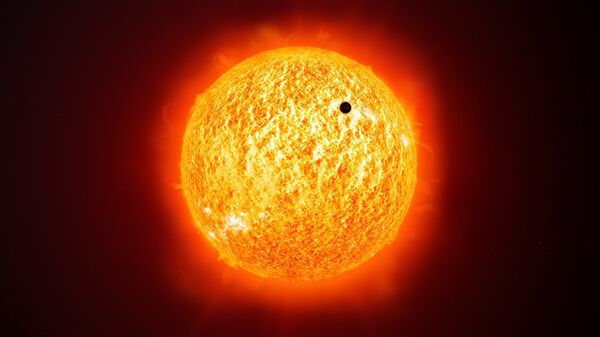An international team of scientists led by Queen’s University Belfast, Ireland, claims to have solved the mystery behind how the Sun's corona maintains its multi-million-degree temperatures despite its location further from the heat source, according to a study report.
“This new research opens the door to providing a new understanding of the mystery surrounding the Sun’s magnetic waves. This is a crucial step towards explaining the coronal heating problem - where the temperature a few thousand km from the surface - is hotter than the heat source itself,” said Dr. Ben Snow, a postdoc researcher at the Centre for Geophysical and Astrophysical Fluid Dynamics at the University of Exeter, and co-author of the current study.
The study highlighted the importance of understanding how the wave motion is generated and spread through the Sun, as scientists have long accepted that magnetic waves channel energy from the Sun’s interior, powered by nuclear fusion, up into the outer regions of its atmosphere.
“This new understanding of wave motion may help scientists uncover the missing piece in the puzzle of why the outer layers of the Sun are hotter than its surface, despite being further from the heat source. By breaking the Sun’s light up into its basic colours, we were able to examine the behaviour of certain elements from the periodic table within its atmosphere, including silicon (formed close to the Sun’s surface), calcium and helium (formed in the chromosphere where the wave amplification is most apparent),” said Dr. David Jess, a scientist from the School of Mathematics and Physics at Queen’s and leader of the team of experts.
Jess further explained that variations in the elements allowed the speed of the Sun’s plasma to be uncovered. “The timescales over which they evolve were benchmarked, which allowed the wave frequencies of the Sun to be recorded. This is similar to how a complex musical ensemble is deconstructed into basic notes and frequencies by visualising its musical score,” he added.
The experts using super-computers analysed data and found that the wave amplification process can be referred to the formation of an ‘acoustic resonator’, in which significant changes in temperature between the solar surface and its outer corona create boundaries that are partially reflective, acting to trap the waves, allowing them to intensify and become stronger.
The team also found that one of the main factors affecting the characteristics of the detected wave motion is the thickness of the resonance cavity, the distance between significant temperature changes.
“The effect that we have found through the research is similar to how an acoustic guitar changes the sound it emits through the shape of its hollow body. If we think of this analogy we can see how the waves captured in the Sun can grow and change as they exit its surface and move towards the outer layers and exterior,” noted Jess.
The team of experts conducting the study consisted of 13 scientists from five countries representing 11 research institutes, among which are the University of Exeter; Northumbria University; the European Space Agency; Instituto de Astrofísica de Canarias, Spain; University of Oslo, Norway; the Italian Space Agency and California State University Northridge, US; alongside Queen’s University Belfast as study leader.
The full study is published on the Nature Astronomy scientific website. The research was funded by a number of organisations and companies.
The global physics community is planning to carry further investigations on this phenomenon using nextgen solar telescopes including the upcoming Daniel K. Inouye Solar Telescope.



